2.57" rain predicted by Sunday morning (00z NAM model).
85 F. high in the Twin Cities Wednesday.
80 F. average high for June 19.
93 F. high on June 19, 2012.
Severe Potential
Welcome to the 19th chilliest spring since 1873,
according to Pete Boulay at the Climate Office. One benefit of June
cool fronts? They tend to put a damper on severe weather. We've gotten
the rain, without the hail and wailing tornado sirens.
Southern Minnesota has experienced 3 small
tornadoes; only 1 in Wisconsin in 2013 - a southward dip in the jet
stream nudging the strongest T-storms well south of home.
That may be about to change. Under the heading
of "Be Careful What You Wish For" the leading edge of hot, tropical air
arrives later today and Friday, with enough instability and wind shear
for a few severe storms. Be alert for watches and warnings later today
and Friday.
These warm front often kick off swarms of very
heavy thunderstorms at night. An MCS, or meso-convective system, capable
of frequent lightning and flooding rains, may interrupt REM sleep the
next few nights.
T-storms spill over into Saturday, pushing into
northern Minnesota Sunday. And then it gets hot. 90F is likely by Sunday
and Monday of next week. Factor in a dew point of 70-75 and it will
feel sultry.
It won't be as hot & stuffy as 2012, but the
Summer of 2013 will include occasional heat spikes to go with the
thunderstorms.
Coolest Spring since 1996 in the Twin Cities:
19th coolest
17th wettest
Details from Pete Boulay at the
Minnesota State Climate Office: "If you look at March 20 to June 20
(with two days missing for this year) 2013 is ranked at #19 coldest
going back to 1873 for the Twin Cities with 50.2 degrees. We could creep
up a little bit with the mild last two days. The years that have been
colder over the past 30 years are 1996 (3-way tie with 1909 and 1950 for
8th coldest) and 1983 at the 14th coldest (tied with 1961). The coldest
is 1907 with 46.5 degrees. Basically, it's been the coolest spring since 1996.
In the precipitation category for the Twin
Cities, it looks like 2013 will come in 17th, with 13.05 inches,
although we could go up a bit there with more rain! 2012 was 2nd, with
16.33 inches."
A Noisy Hot Front. The approach of very warm, humid
air sets off swarms of thunderstorms into at least Saturday morning; a
small percentage may produce hail and damaging winds, even an isolated
tornado. Be alert for watches and possible warnings over the next 48
hours. Maps above: NOAA SPC.
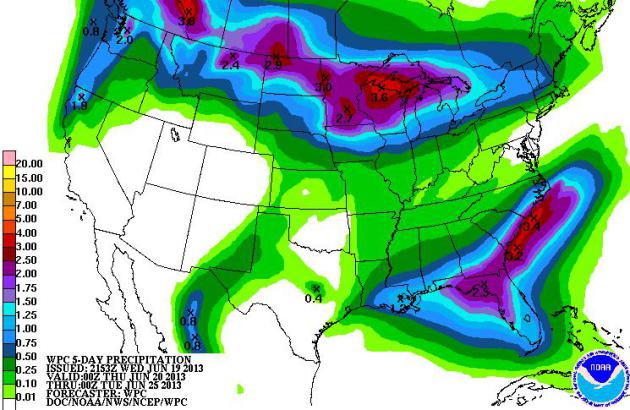 A Soggy 48 Hour Spell
A Soggy 48 Hour Spell.
Heavy showers and T-storms are likely across the Upper Midwest into
Saturday, possibly Sunday morning, as very hot, steamy air pushes north.
Training thunderstorms may spark some 3-4"+ rains, and I could see some
flash flooding. More heavy rain is likely over the coastal Carolinas;
some 2-4" amounts possible over the next 5 days.
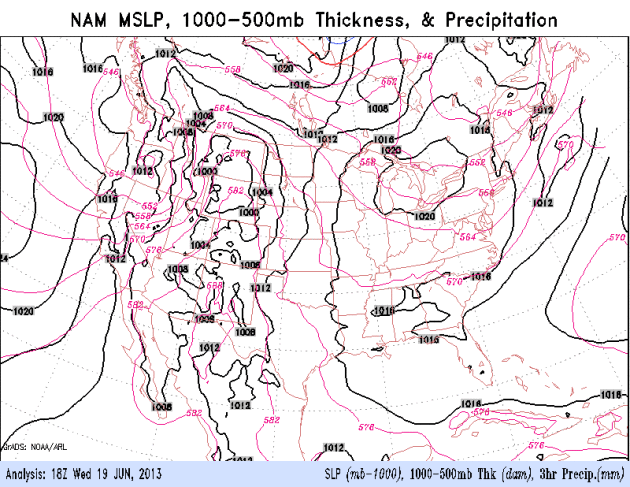 An Active Warm Frontal Boundary
An Active Warm Frontal Boundary.
Thunderstorms tend to increase during the overnight hours, as low-level
winds focus on frontal boundaries. Conditions may be ripe for a few MCS
(meso-convective) systems flaring up late each night, capable of
torrential rains, gusty winds and frequent lightning. Storms spill over
into Saturday, possibly Sunday morning. Keep your sun expectations low
this weekend, but it will be warm and humid; highs in the 80s to near 90
with dew points in the low to mid 70s.
 Unfortunate Timing
Unfortunate Timing. The 13th weekend in a row with rain? Looks like it. ECMWF
model
data keeps showers and T-storms into at least Saturday; Sunday the
drier, sunnier (hotter) day. Dry weather may previal the first half of
next week with highs in the 80s to near 90. Hot enough, but not
"2012-hot".
Tornado Tales. Tuesday a tornado formed over the
runways at DIA, Denver International Airport, causing hundreds of
travelers and employees to scramble to find a suitable shelter - rumors
of hundreds of fliers jammed into one rest room. In today's edition of "
Climate Matters"
I discuss POD and FAR (false alarm rates) that are still too high,
urban tornadoes, dual polarization Doppler radar, and how land use and
suburban sprawl is putting more Americans in the potential path of
tornadoes: "
Seeing the remarkable images from DIA Tuesday sparked
some discussion about tornado locations and the impact of urban sprawl.
Meteorologist Paul Douglas says there is no evidence that we are
seeing more extreme tornadoes, simply more people in the way."
It's Ridiculously Hot In Alaska Right Now. Buzzfeed has some great photos and an explanation: "
It
might not be as bad as actual places that are actually hot, but
remember, they don’t have many air conditioners in Alaska. It’s the
hottest heat wave in the state since 1969, Jeff Masters, meteorology
director of the online forecasting service Weather Underground, told the AP..."
And The Weatherman Says There's More To Come. The
jet stream has been unusually far south for most of spring, over North
America and Europe, leading to cooler, wetter weather. And there may be a
link to record melting of Arctic ice last fall having a domino effect
on the winds that swirl around northern latitudes. Here's an excerpt
from the
International Herald Tribune: "...
In
recent years, however, the path of the jet stream has shifted
southward, trapping cold air over much of Europe. But is it a natural
phenomenon or yet another perverse consequence of global warming? The
scientists hedged their bets. “There is some research to say some parts
of the natural system load the dice to influence certain states of the
jet stream,” according to Professor Belcher, “but this loading may be
further amplified by climate change.” The current weather phenomenon is
not unique. Europe underwent the effects of so-called Atlantic
multidecadal oscillations in the 1950s and early 1960s and in the
1880s. The decline of Arctic sea ice, which some scientists blame in part on man-made climate change, is one of the factors cited as responsible for the recent unusual weather patterns..."
Photo credit above: "
A spectator shelters from the weather
during a rain delay at the Queen's Club grass court championships in
London, Wednesday, June 12, 2013." (AP Photo/Kirsty Wigglesworth)
2NEWS Investigates: Which Safe Rooms Are Safest; Above or Below Ground?
Here's an excerpt of a very interesting report (along with videos and
photos) on safe rooms, enhancing existing rooms to survive a direct
strike from a tornado, courtesy of
KJRH-TV in Tulsa: "...
Larry
Tanner, research associate at the Wind Research Center, says most
importantly your safe room must be designed and built to FEMA
guidelines. "They're all safe if they are tested products," said
Tanner. However, in a below ground safe room you face the risk of debris
blocking the exit, or flooding. The good news: No one has ever been
killed in an approved safe room whether above or below ground. And
after seeing video footage of cars picked up and tossed by tornadoes
many of you asked whether above ground safe rooms will stand up to cars
falling out of the sky? Tanner says safe rooms built to FEMA
guidelines handle a 3,000 pound vehicle being dropped on them no
problem. "The 57 Cadillac draping over the sides of the shelter. That's
virtually what we see all the time," Tanner said..."
The New Measure Of America. By this standard, and
most others, come to think of it, Minnesota comes out looking very good.
Here's the intro to a story from
Marketplace: "
According
to some economists who have criticized standard economic metrics, we
have more than enough ways to measure how the economy is doing -- gross
domestic product, the unemployment rate, the Dow, to name just a few
-- and not enough ways to measure how people are actually doing in the
economy. An alternative metric to GDP, that gauges ‘human development,’
was advocated by the late economist Mahbub ul Haq, and developed by ul Haq and Indian Nobel economics laureate Amartya Sen.
An adaptation of their Human Development Index (HDI) for the U.S.
economy has been deployed by the Social Science Research Council to
measure the well-being and opportunity of Americans. The group’s third
installment is out today, entitled “The Measure of America 2013-2014....”
Graphic credit above: "
The chart above shows the human development index for all 50 states. States with darker shading scored higher." (Source:
Social Science Research Council)
Confirmed: One Billion Year Old Water Tastes "Terrible". Here's a snippet from a curious article at
The Atlantic, for anyone who ever wondered what (really) old water tastes like: "...
Last month, a paper published in Nature
reported on some water that had been trapped 1.5 miles below the
Earth's surface in Canada for a long while. How long? Based on an
analysis of the isotopes of natural gases in the water, scientists
believe it to be the oldest isolated water ever studied, at least 1
billion years old and maybe as old as 2.64 billion, slightly younger
than the rocks that encased it.* For maybe half as long as the Earth's
entire existence, this water has been sealed away, unexposed to the
atmosphere. The next question: Is it drinkable? The answer: Not really,
but a sip won't kill you. According to an interview in the Los Angeles Times,
one of the paper's authors, Barbara Sherwood Lollar, has tasted it,
and it was "terrible," she reports. "It is much saltier than seawater..."
Photo credit: J. Telling.
A Word About Vince. By now you're heard the news
about Vince Flynn's tragic passing from prostate cancer. Like everyone
else I was shocked, crushed, saddened. Vince was the real deal. Everyone
knows he was a prolific writer, Matt Rapp's alter ego, but Vince was
just a great all-around man, not only the guy you want to have a beer
with, but a leader and mentor who gave back to his community. He took
philanthropy seriously and did everything in his power to make Minnesota
an even better place to live. WCCO's Frank Vascellero introduced me to
Vince about 5 years ago, knowing I had a son considering military duty.
Not only did Vince agree to talk with my son about serving in the Navy,
but he took time out of his schedule to sit down and coach him in
person, ultimately encouraging him to push forward at the Naval Academy
and become an aviator. I'll never forget that gesture of kindness. He
didn't have to do that. Vince Flynn never bought into his own promotion,
the "New York Times best-selling-author" hype. He was just a guy from
St. Paul who did OK for himself and his family. Vince had a heart of
gold. He's going to be missed.

TODAY: More clouds - a few strong T-storms possible later. Winds: SE 10-20. High: 82
THURSDAY NIGHT: T-storms likely, locally heavy rain and frequent lightning possible. Low: 69
FRIDAY: Very warm and humid. T-storms, some severe. High: 85
SATURDAY: Unsettled & muggy , more T-storms likely. Wake-up: 73. High: 87
SUNDAY: Sticky, hazy sun. T-storms up north. Wake-up: 74. High: 91
MONDAY: Suddenly summer. Isolated T-storm. Wake-up: 70. High: 89
TUESDAY" Partly sunny, good lake/pool day. Wake-up: 71. High: 88
WEDNESDAY: More clouds than sun. Wake-up: 70. High: 86
* photo above courtesy of Paul Zunkel.
Climate Stories...
Obama Calls Climate Change The "Global Threat Of Our Time" In Berlin Address. Here's an excerpt from
The Hill: "
President
Obama on Wednesday called climate change the “global threat of our
time" in a speech in Berlin. Amid signs the White House is getting
ready to unveil new executive-level steps to curb greenhouse gases,
Obama linked fighting climate change to peace and justice while calling
for bold action. “Peace with justice means refusing to condemn
our children to a harsher, less hospitable planet," he said in a speech
at Berlin's Brandenburg Gate. "The effort to slow climate change
requires bold action.” Obama touted his first-term work on green energy
and boosting auto efficiency rules, but added: “We know we have to do
more — and we will do more...”
Photo credit above: "
President Barack Obama speaks in
front of the iconic Brandenburg Gate in Berlin Germany, Wednesday, June
19, 2013. Obama is planning a major push using executive powers to
tackle the pollution blamed for global warming in an effort to make
good on promises he made at the start of his second term. "We know we
have to do more — and we will do more," Obama said in Berlin." (AP Photo/Pablo Martinez Monsivais)
The Science Of Why We Don't Believe Science. Here's the intro to a must-read article from Chris Mooney at
Mother Jones,
laying out a convincing tale of why more evidence, more facts and more
data can actually reduce the odds of people "believing the science": “
A
MAN WITH A CONVICTION is a hard man to change. Tell him you disagree
and he turns away. Show him facts or figures and he questions your
sources. Appeal to logic and he fails to see your point.” So wrote the
celebrated Stanford University psychologist Leon Festinger, in a
passage that might have been referring to climate change denial—the
persistent rejection, on the part of so many Americans today, of what
we know about global warming and its human causes. But it was too early
for that—this was the 1950s—and Festinger was actually describing a famous case study
in psychology. Festinger and several of his colleagues had infiltrated
the Seekers, a small Chicago-area cult whose members thought they were
communicating with aliens—including one, “Sananda,” who they believed
was the astral incarnation of Jesus Christ. The group was led by
Dorothy Martin, a Dianetics devotee who transcribed the interstellar
messages through automatic writing..."
Illustration above: Jonathon Rosen.
U.S. Airports Face Increasing Threat From Rising Seas. Climate Central has the story - here's the intro: "
When Hurricane Sandy
struck New York City on October 29, 2012, the dark waters of Flushing
Bay poured over the edges of LaGuardia Airport, flooding parts of the
facility’s 7,000-foot long east-west runway, and damaging lighting and
navigation systems. The floodwaters created an eerie image of jetways
ending in water, as if they had been converted into boat ramps. This was
not the first time that LaGuardia suffered major flooding during a
storm, nor will it be the last. Due to climate change-related sea level
rise, LaGuardia and other coastal hubs throughout the U.S. face a
growing risk of flooding during even modest storms..."
Graphic credit above: "
What
LaGuardia Airport could look like at high tide with 5 feet of sea
level rise, an amount that could occur by 2100, according to some
estimates." Credit: Nickolay Lamm/StorageFront interpretation of Climate Central data.
Where Is Global Warming Going? This graphic from
Skeptical Science does a good job of summing up the answer: into the world's oceans: "
A
visual depiction of how much global warming heat is going into the
various components of the climate system for the period 1993 to 2003,
calculated from IPCC AR4 5.2.2.3. Note that focusing on surface air temperatures misses more than 90% of the overall warming of the planet."
Climate Science Debate Has Cost Precious Time. The Guardian has the story - here's a clip: "...
The
commission's updated analysis states that evidence of a "rapidly
changing climate has continued to strengthen over the last two years",
including, importantly, the link between climate change and extreme
weather events. "It is clear that the climate system has already
shifted, changing conditions for all weather," says the study. "While
extreme weather events have always occurred naturally, the global
climate system is hotter and wetter than it was 50 years ago. This has
loaded the dice toward more frequent and forceful extreme weather
events..."
Photo credit above: "
There is increasing evidence of man-made climate change and extreme weather events, according to a new report." Photograph: David Gray/Reuters.
Climate Change Will Reshape World "In Our Lifetimes" - World Bank President. Here's an excerpt of an article from
Thomson Reuters Foundation: "...
After
seeing widespread deaths from pollution last winter, “there’s a new
spirit in China,” Kim said. The Asian giant, the world’s largest carbon
emitter, is setting “really, really aggressive goals” on curbing
climate-changing emissions, and are moving to establish what could be
the world’s biggest national carbon market, he said. Right now,
“they’re more serious than any country I know” in terms of acting on
climate change, Kim said. That, combined with what he said was strong
political will in the White House to address the problem and moves to
curb emissions from New Delhi to New York, could add up to changes that
will eventually address “the huge bulk of the issue” – even if it’s
not happening fast enough, he said..." (image: NASA).
Fracking Sucking Up Water In Drought Areas. This is going to become even more of an issue in the western USA, where water is already at a premium. Here's an excerpt from
The Arizona Daily Star: "
The
latest domestic energy boom is sweeping through some of the nation's
driest pockets, drawing millions of gallons of water to unlock oil and
gas reserves. Hydraulic fracturing, the drilling technique commonly
known as fracking, has for decades blasted huge volumes of water, fine
sand and chemicals to crack open valuable underground shale formations.
But now, as energy companies vie to exploit vast reserves west of the
Mississippi, fracking's new frontier is expanding to the same lands
where crops have shriveled and waterways have dried up due to severe
drought..."

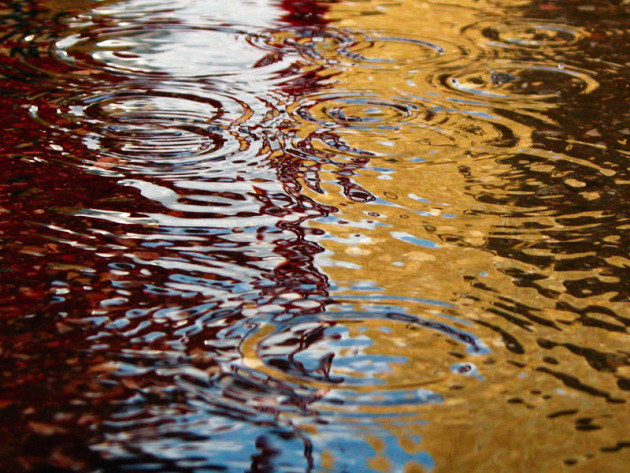
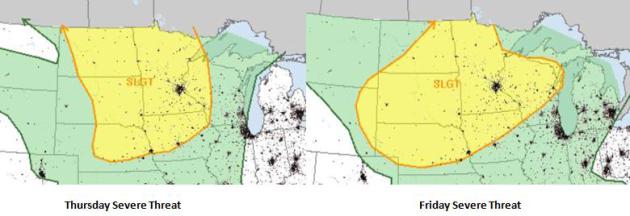



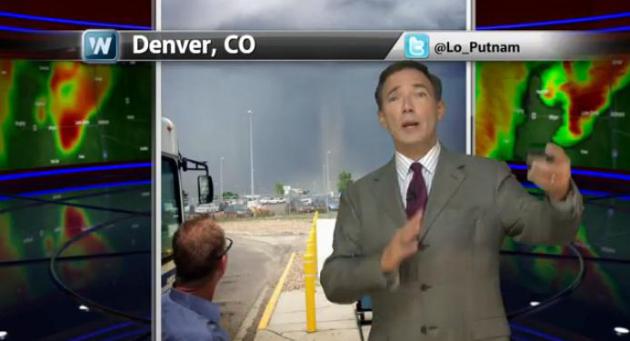
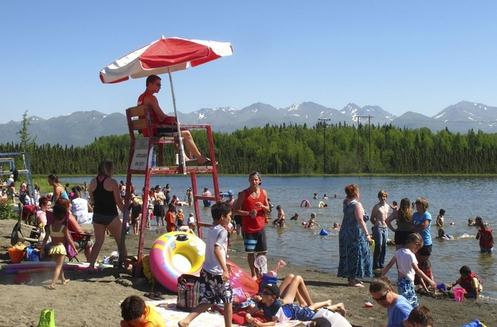






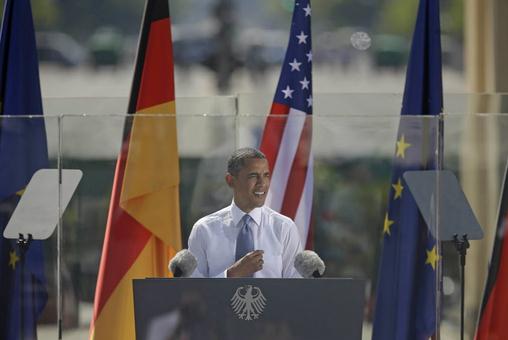

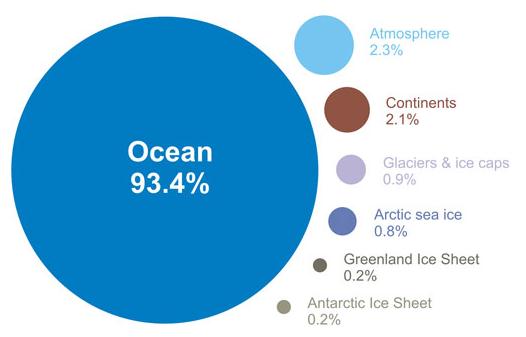




No comments:
Post a Comment